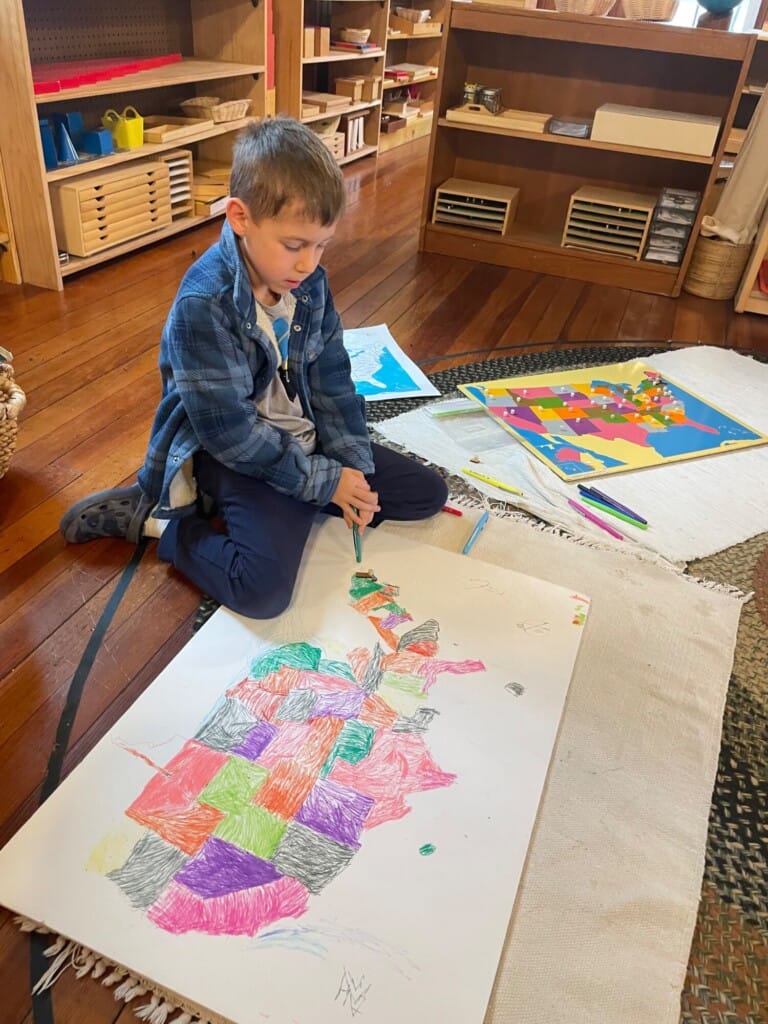The geography materials help the child learn about the facts of the material world. Working with the sensorial, language and cultural materials related to geography is an important part of the work of a Montessori primary classroom.
Our guides introduce very young children to a sandpaper globe where they can have a visual and tactile experience of the Earth. The children use other sensorial materials and puzzle maps to explore the continents of our world, the countries of each continent, and the states of our own country. Additionally, the children create key land and water forms such as lake, island, and peninsula.
The guide give geography vocabulary orally and with prepared nomenclature cards that are used by the children as an integrated part of their language work. The curriculum includes the diversity of international cultures by means of stories, songs, celebrations, pictures, and artifacts.

